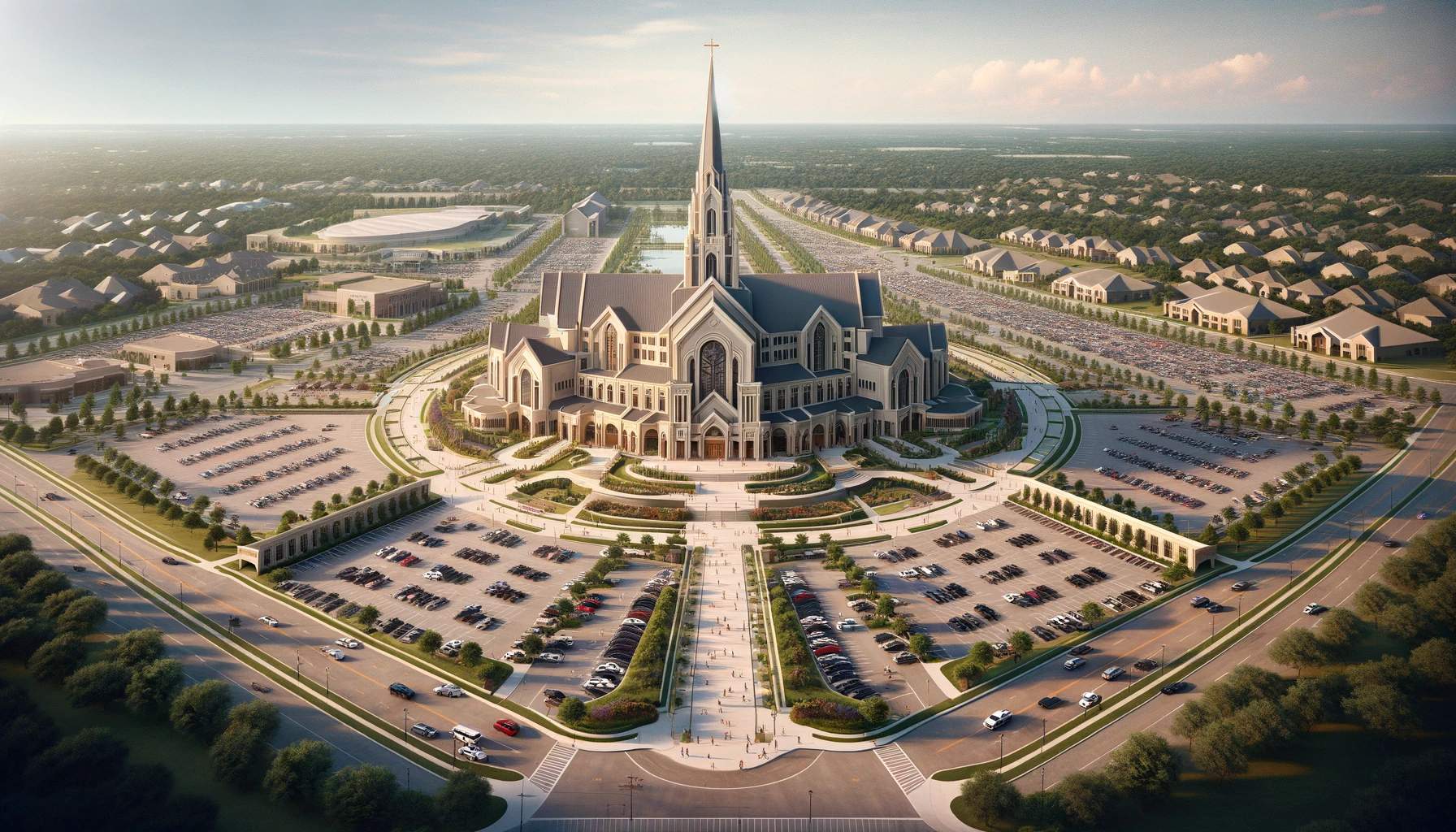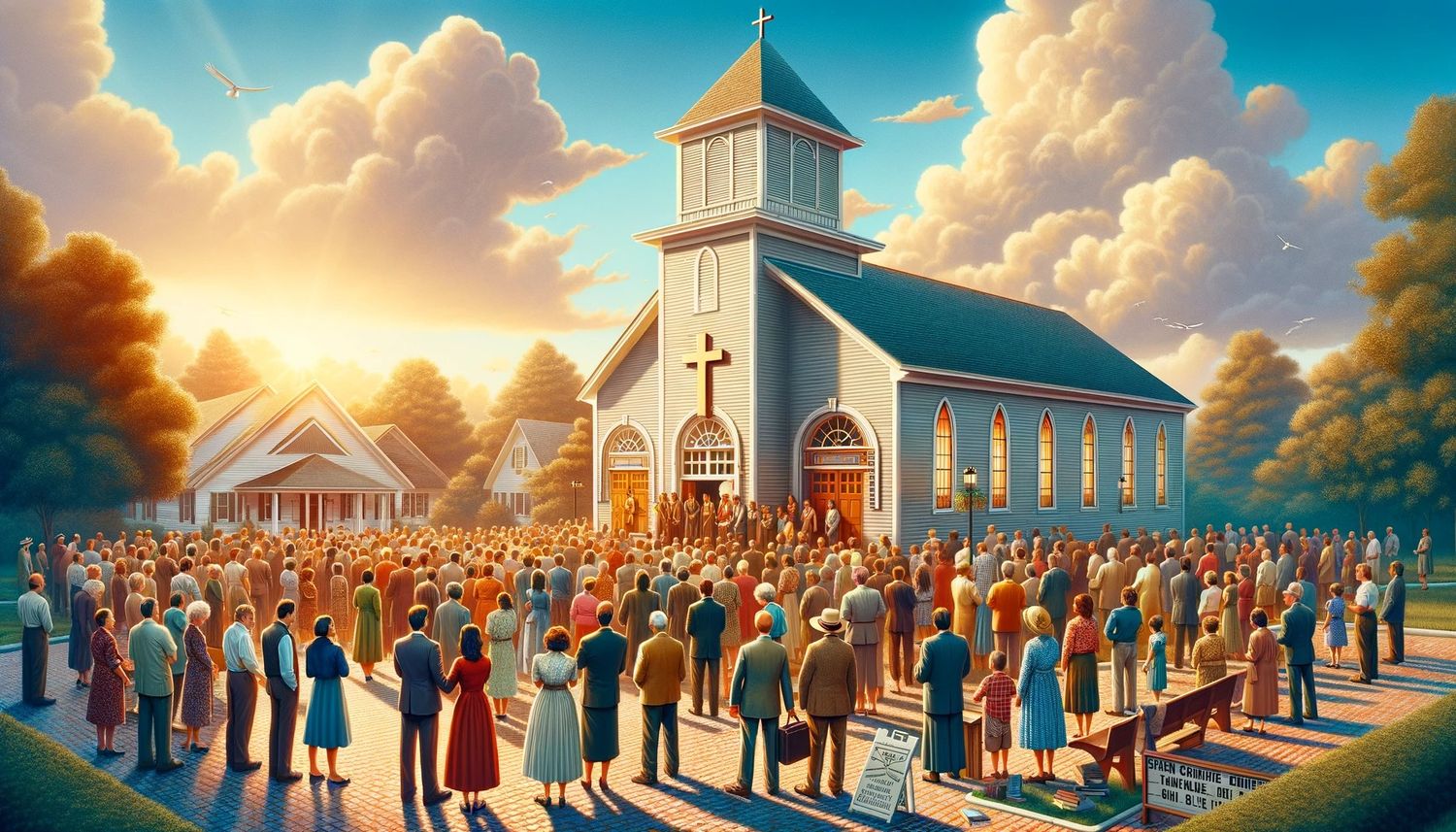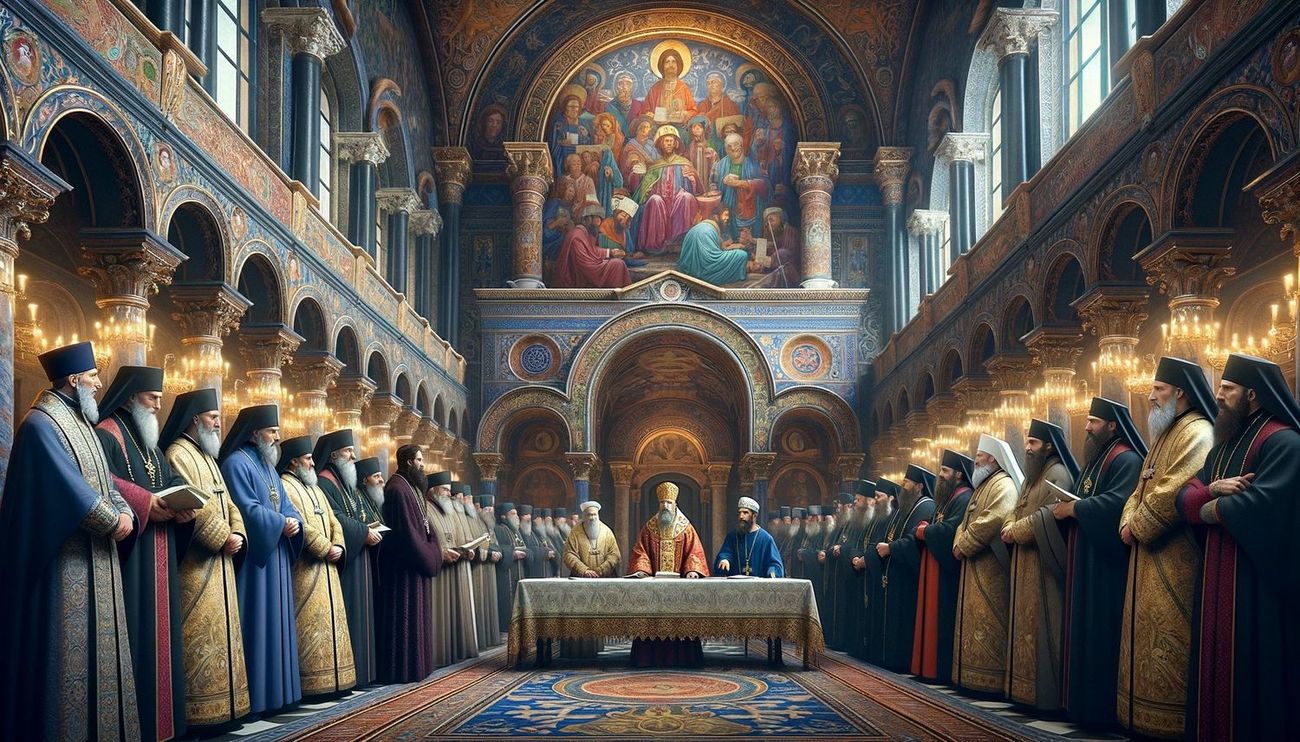Home>Theology and Spirituality>Why Did The Southern Baptist Church Split


Theology and Spirituality
Why Did The Southern Baptist Church Split
Published: February 21, 2024
Ericka Andersen, an editor at Christian.net, expertly merges digital strategy with content creation, focusing on faith and societal issues. Her communication skills enhance the platform's engaging narratives, fostering meaningful dialogue on belief's impact on society.
Discover the reasons behind the split in the Southern Baptist Church and its impact on theology and spirituality. Explore the theological differences that led to this significant division.
(Many of the links in this article redirect to a specific reviewed product. Your purchase of these products through affiliate links helps to generate commission for Christian.net, at no extra cost. Learn more)
Table of Contents
Introduction
The Southern Baptist Church, one of the largest Protestant denominations in the United States, has recently experienced a significant and widely discussed split. This division has sparked intense debates and raised profound questions about the future of the church and the implications for its members and the broader religious community. Understanding the reasons behind this split, the key players involved, and the potential impact is crucial for grasping the complexities of this pivotal moment in the church's history.
The Southern Baptist Church has long been recognized for its conservative theological stance, commitment to evangelism, and influence in American culture and politics. However, in recent years, internal tensions have escalated, culminating in a rupture that has captured the attention of both the religious and secular spheres. As we delve into the historical background, factors leading to the split, key players, and the aftermath, we will gain valuable insights into the dynamics at play and the potential ramifications for the church and its members.
This article aims to provide a comprehensive exploration of the Southern Baptist Church split, shedding light on the multifaceted factors that have contributed to this pivotal moment. By examining the historical context, key individuals, and the broader implications, we can gain a deeper understanding of the complexities and significance of this event. Let's embark on a journey to unravel the intricacies of the Southern Baptist Church split and its far-reaching impact.
Historical Background of the Southern Baptist Church
The roots of the Southern Baptist Church can be traced back to the early 17th century when English Separatists and Puritans sought religious freedom in the New World. As the United States took shape, Baptists emerged as a distinct group, emphasizing the autonomy of local churches and the practice of believer's baptism. The Southern Baptist Convention (SBC) officially formed in 1845 in Augusta, Georgia, following a split with northern Baptists over the issue of slavery.
Throughout its history, the Southern Baptist Church has been characterized by its conservative theological positions, commitment to evangelism, and missions work. The denomination experienced significant growth and influence, particularly in the southern regions of the United States, where it became deeply intertwined with the cultural and social fabric.
The Southern Baptist Church played a prominent role in various social and political movements, including the Civil Rights era, where its stance on racial segregation became a point of contention. Over time, the denomination grappled with internal debates on theological interpretation, social engagement, and ecclesiastical authority, reflecting the broader societal shifts and cultural changes.
In the latter part of the 20th century and into the 21st century, the Southern Baptist Church faced challenges related to gender roles, the role of women in ministry, and evolving attitudes toward LGBTQ+ issues. These issues sparked internal tensions and debates, leading to a growing divide within the denomination.
As the church navigated these complexities, differing perspectives on biblical interpretation, cultural engagement, and the nature of church leadership emerged, setting the stage for the recent split that has captured widespread attention. The historical trajectory of the Southern Baptist Church provides essential context for understanding the factors that have contributed to the current division and the broader implications for the denomination and its members.
This historical background illuminates the rich tapestry of the Southern Baptist Church's journey, marked by pivotal moments, theological debates, and societal shifts. As we delve deeper into the factors leading to the split and the key players involved, we will gain a more comprehensive understanding of the complexities and dynamics shaping this significant chapter in the church's history.
Factors Leading to the Split
The Southern Baptist Church split has been propelled by a confluence of complex and deeply rooted factors that have gradually escalated, culminating in a definitive rupture within the denomination. These factors encompass theological differences, cultural shifts, and divergent perspectives on critical social and ecclesiastical issues, underscoring the multifaceted nature of the division.
Theological Interpretation and Doctrine
At the heart of the division are fundamental theological disparities, particularly concerning biblical interpretation and doctrinal emphases. The Southern Baptist Church has long been characterized by its conservative theological stance, emphasizing the authority of Scripture and traditional doctrinal positions. However, internal debates over nuanced theological issues, such as soteriology, eschatology, and ecclesiology, have surfaced, revealing deep-seated theological divergences among leaders and congregants.
Social and Cultural Dynamics
The evolving cultural landscape has exerted significant influence on the internal dynamics of the Southern Baptist Church. Shifting societal attitudes toward gender, sexuality, and racial reconciliation have prompted intense discussions and disagreements within the denomination. The intersection of faith and culture has become a focal point of contention, as differing perspectives on social engagement, justice advocacy, and the church's role in addressing contemporary issues have emerged as divisive points.
Read more: Why Did Calvary Chapel Split
Leadership and Governance
Disputes over ecclesiastical authority, leadership structures, and decision-making processes have also contributed to the rift within the Southern Baptist Church. Questions surrounding the balance of power between local congregations and the broader denominational framework, as well as differing visions for the future direction of the church, have fueled internal tensions and led to divergent paths among influential leaders and congregational bodies.
Missional and Evangelistic Approaches
Differing approaches to missions, evangelism, and outreach have played a pivotal role in shaping the contours of the split. Varied perspectives on missional methodologies, engagement with contemporary culture, and the prioritization of specific outreach initiatives have underscored contrasting visions for the church's mission and impact, further deepening the divisions within the denomination.
The Impact of External Influences
External societal and cultural influences, including the broader evangelical landscape and the polarized political climate, have also reverberated within the Southern Baptist Church, amplifying existing tensions and contributing to the divergence of perspectives on critical issues. The interplay between external forces and internal dynamics has added layers of complexity to the factors driving the split.
These multifaceted factors, intertwined with deeply held convictions and divergent visions for the future of the denomination, have collectively fueled the division within the Southern Baptist Church, underscoring the intricate interplay of theological, cultural, and ecclesiastical dynamics shaping this pivotal moment in its history.
Key Players in the Split
The Southern Baptist Church split has been profoundly influenced by the actions, perspectives, and leadership of key individuals who have played pivotal roles in shaping the trajectory of the denomination. These influential figures, representing diverse theological and ideological positions, have contributed to the intensification of internal tensions and the crystallization of differing visions for the future of the church.
Read more: How Did Southern Baptist Church Start
Prominent Leaders and Theologians
At the forefront of the split are influential leaders and theologians within the Southern Baptist Convention, whose theological perspectives and public statements have underscored the deep-seated divisions within the denomination. These figures, known for their scholarly contributions, pastoral leadership, and public advocacy, have articulated contrasting positions on critical theological and social issues, amplifying the existing fault lines and garnering significant attention within the broader evangelical landscape.
Denominational Officials and Organizational Voices
Key officials and organizational voices within the Southern Baptist Convention have also played a central role in shaping the contours of the split. Their positions on governance, decision-making processes, and the allocation of resources have reflected divergent approaches to addressing the internal challenges facing the denomination. The interplay of institutional dynamics and leadership perspectives has contributed to the crystallization of differing paths forward, further accentuating the division within the denomination.
Influential Congregational and Community Leaders
Local congregational and community leaders have emerged as influential voices in navigating the complexities of the split. Their engagement with congregants, pastoral guidance, and public statements have reflected a spectrum of perspectives on theological interpretation, social engagement, and the future direction of the church. These leaders have become focal points of influence, shaping the discourse and responses within congregational settings and broader community contexts.
Advocacy Groups and Grassroots Movements
Advocacy groups and grassroots movements advocating for specific theological emphases, social justice initiatives, and ecclesiastical reforms have also contributed to the fragmentation within the Southern Baptist Church. These organized efforts, representing diverse constituencies and ideological orientations, have mobilized support for distinct visions of the church's identity and mission, amplifying the divergent voices and perspectives within the denomination.
Read more: What Is A Southern Baptist Church
External Influencers and Collaborative Networks
External influencers, including prominent figures from the broader evangelical landscape, collaborative networks, and interdenominational partnerships, have exerted significant influence on the dynamics of the split. Their engagement with Southern Baptist leaders and congregations, as well as their public statements and collaborative initiatives, have intersected with internal debates and contributed to the amplification of differing perspectives on critical theological and social issues.
The interplay of these key players, representing diverse theological, organizational, and communal perspectives, has been instrumental in shaping the contours of the Southern Baptist Church split, underscoring the multifaceted nature of the division and the complex interplay of influential voices within the denomination.
Impact of the Split
The ramifications of the Southern Baptist Church split reverberate across multiple dimensions, encompassing theological, ecclesiastical, and societal implications that have far-reaching effects on the denomination and its broader influence. The division has precipitated a seismic shift within the Southern Baptist Convention, reshaping its internal dynamics and external relationships while prompting profound reflections on the future trajectory of the denomination.
Theological and Doctrinal Realignment
The split has engendered a theological and doctrinal realignment within the Southern Baptist Church, as divergent factions navigate their distinct interpretations of Scripture, ecclesiological convictions, and missional emphases. This realignment has led to the crystallization of theological positions, the reconfiguration of doctrinal emphases, and the emergence of distinct theological identities, marking a significant departure from the historical unity that characterized the denomination.
Ecclesiastical Landscape and Organizational Dynamics
The division has reshaped the ecclesiastical landscape and organizational dynamics of the Southern Baptist Convention, prompting a reevaluation of governance structures, decision-making processes, and the allocation of resources. The realignment of congregations, leadership transitions, and the formation of new affiliations have redefined the denominational framework, signaling a transformative phase in the organizational structure and operational mechanisms of the Southern Baptist Church.
Read more: When Was Southern Baptist Church Founded
Missional Engagement and Social Impact
The split has precipitated varied approaches to missional engagement and social impact, as divergent factions prioritize distinct outreach initiatives, justice advocacy efforts, and cultural engagements. This shift in missional and social priorities has implications for the church's influence in societal spheres, its response to contemporary challenges, and its role in shaping cultural narratives, reflecting the diverse visions for the church's mission and societal relevance.
Congregational Dynamics and Community Relationships
At the congregational level, the split has catalyzed shifts in congregational dynamics and community relationships, as local churches navigate the complexities of theological divergence and ecclesiastical realignment. These shifts have implications for pastoral leadership, congregational identity, and community engagement, shaping the relational fabric of congregations and their broader impact on local communities.
Broader Evangelical Landscape and Interdenominational Relations
The division within the Southern Baptist Church has reverberated across the broader evangelical landscape and interdenominational relations, influencing collaborative initiatives, theological dialogues, and shared mission endeavors. The realignment of denominational affiliations and the recalibration of collaborative networks have contributed to a reconfiguration of the broader evangelical ecosystem, signaling a transformative phase in interdenominational relationships and collaborative partnerships.
The impact of the split extends beyond the internal dynamics of the Southern Baptist Church, permeating theological, ecclesiastical, and societal dimensions, and shaping the broader contours of the denomination's influence and engagement with the contemporary world. As the denomination navigates the implications of this division, it faces a pivotal juncture in its history, marked by profound transformations and the redefinition of its identity and mission in a rapidly evolving cultural and religious landscape.
Conclusion
The Southern Baptist Church split represents a watershed moment in the denomination's history, marked by profound theological, ecclesiastical, and societal implications. As the division continues to unfold, it underscores the complex interplay of theological differences, cultural dynamics, and leadership perspectives that have shaped the trajectory of the denomination. The historical background of the Southern Baptist Church, characterized by its conservative theological stance and cultural influence, provides essential context for understanding the factors that have contributed to the current division and the broader implications for the denomination and its members.
The factors leading to the split, including theological interpretation, social and cultural dynamics, leadership and governance disputes, missional approaches, and external influences, have collectively fueled the division within the Southern Baptist Church. These multifaceted factors, intertwined with deeply held convictions and divergent visions for the future of the denomination, underscore the intricate interplay of theological, cultural, and ecclesiastical dynamics shaping this pivotal moment in its history.
Key players, including prominent leaders and theologians, denominational officials, congregational and community leaders, advocacy groups, and external influencers, have played instrumental roles in shaping the contours of the split. Their diverse perspectives and influential voices have contributed to the intensification of internal tensions and the crystallization of differing visions for the future of the church.
The impact of the split extends across theological, ecclesiastical, and societal dimensions, reshaping the denominational landscape, organizational dynamics, missional engagement, congregational relationships, and broader evangelical interactions. As the denomination navigates the implications of this division, it faces a pivotal juncture in its history, marked by profound transformations and the redefinition of its identity and mission in a rapidly evolving cultural and religious landscape.
In conclusion, the Southern Baptist Church split represents a critical juncture that demands thoughtful reflection, discernment, and engagement. As the denomination grapples with the complexities and ramifications of this division, it is poised to undergo significant transformations, shaping its future trajectory and influence. The ongoing dialogue, discernment, and collective discernment within the denomination will play a crucial role in navigating this pivotal moment and charting a path forward that reflects the diverse voices, convictions, and aspirations within the Southern Baptist Church.











